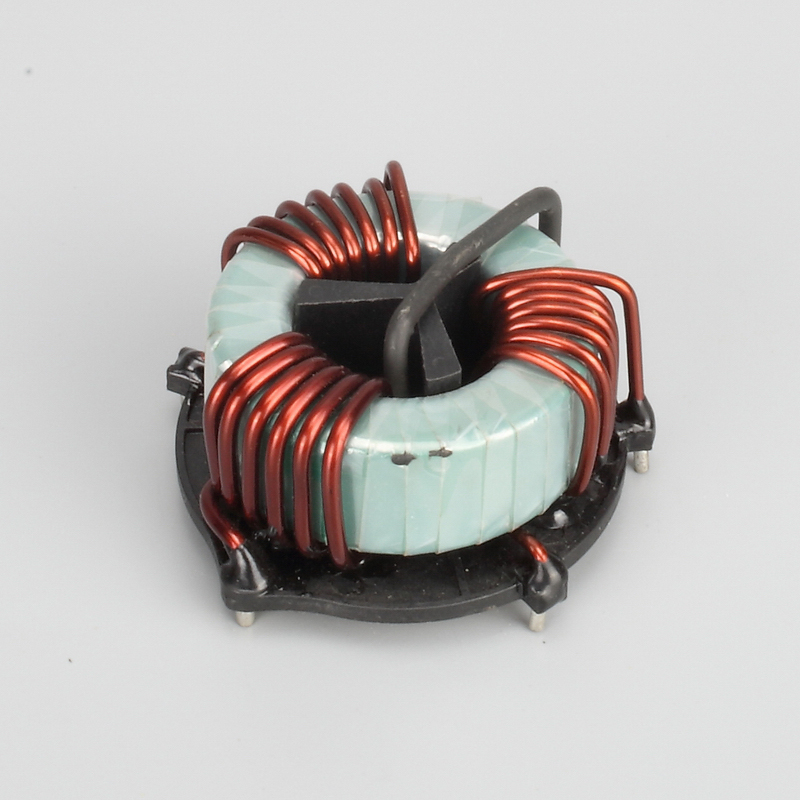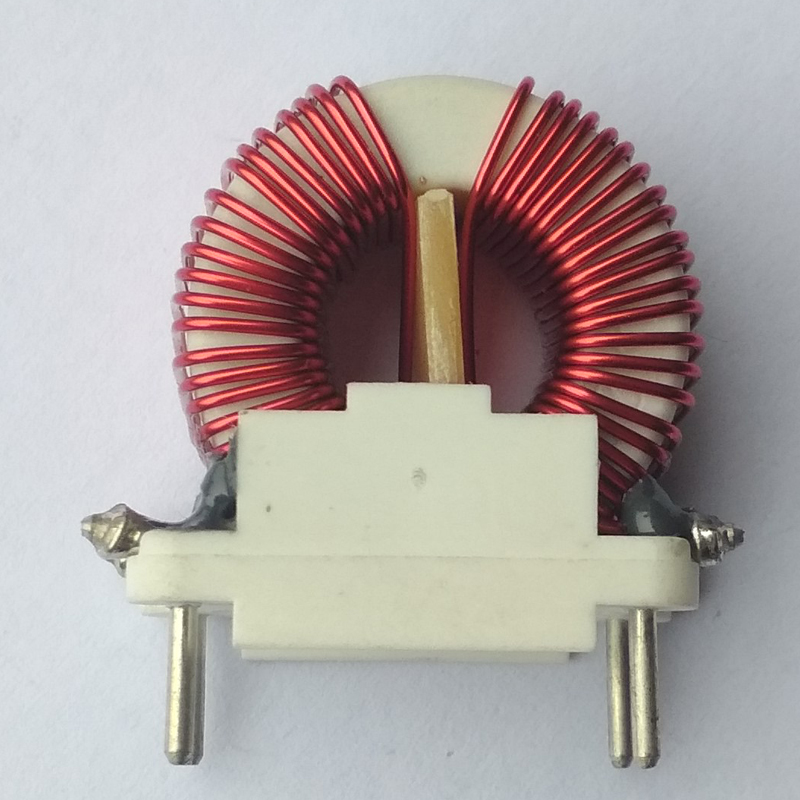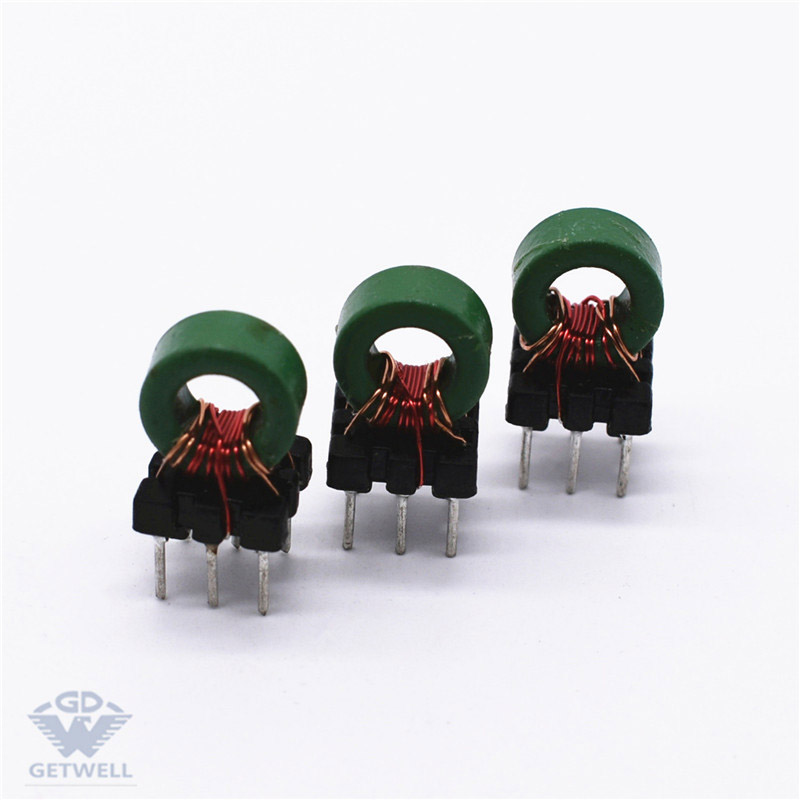Custom inductor manufacturer tells you
Most magnetic rings need to be painted to facilitate the distinction. Generally, iron powder cores are distinguished by two colors, such as red / transparent, yellow / red, green / red, green / blue and yellow / white, manganese core rings are generally painted green, iron, silicon and aluminum are generally all black, and so on. In fact, the color of the magnetic ring after firing has nothing to do with the paint dyeing after spraying, it is just an agreement in the industry. For example, green represents high magnetic conductivity ring; two-color represents iron powder core magnetic ring; black represents iron-silicon-aluminum magnetic ring and so on.
High magnetic conductivity ring
Magnetic ring inductor, have to say Ni-Zn ferrite magnetic ring. Magnetic rings are divided into Ni-Zn and mn-Zn according to materials. The permeability of Ni-Zn ferrite rings varies from 15 to 2000. The commonly used materials are Ni-Zn ferrites with permeability between 100 and 1000. According to permeability classification, Ni-Zn ferrites are divided into low permeability materials. The permeability of mn-Zn ferrite magnetic rings is generally more than 1000, so the magnetic rings produced by mn-Zn ferrites are called high conductivity rings.
Ni-Zn ferrite rings are generally used for anti-interference in all kinds of wires, circuit board ends and computer equipment. Mn-Zn ferrite rings can be used to make cores, heads and antenna rods of inductors, transformers and filters. In general, the lower the permeability of the material, the wider the applicable frequency range; the higher the permeability of the material, the narrower the applicable frequency range.
Iron powder core magnetic ring
Iron powder core is a popular term for magnetic material iron oxide, which is mainly used in electrical circuits to solve the problem of electromagnetic compatibility (EMC). In practical application, a variety of other substances will be added according to the different filtering requirements in different bands.
The early magnetic powder core was a "bonded" metal soft magnetic core pressed by iron-silicon-aluminum alloy magnetic powder. This kind of iron-silicon-aluminum magnetic powder core is often called "iron powder core". Its typical preparation process is as follows: the magnetic powder of Fe-Si-Al alloy is flattened by ball milling and coated with insulating layer by chemical method, then about 15wt% binder is added, mixed evenly, molded and solidified, and the product is made by heat treatment (stress relief) after Z. This traditional "iron powder core" product mainly works in 20kHz powder 200kHz. Because they have much higher saturation flux density, better DC superposition characteristic, magnetostrictive coefficient close to zero, no noise, good frequency stability and high performance-to-price ratio than ferrites working in the same frequency band, they have been widely used in electronic components such as high-frequency electronic transformers. Their disadvantage is that non-magnetic fillers not only produce magnetic dilution, but also make the flux path discontinuous, and local demagnetization leads to the decrease of permeability.
The high-performance iron powder core developed recently by Z is different from the traditional iron-silicon-aluminum magnetic powder core, the raw material used is not alloy magnetic powder but pure iron powder coated with insulating layer, and the amount of binder is very small, so the magnetic flux density has been greatly improved. They work in the middle and low frequency band below 5kHz, usually a few hundred hertz, that is, much lower than the working frequency of Fe-Si-Al magnetic powder core. The target market is to replace the silicon steel sheet used in motor because of its low loss, high efficiency and easy to carry out three-dimensional design.
Fe-Si-Al magnetic ring
Fe-Si-Al magnetic ring is one of the magnetic rings with high utilization. To put it simply, Fe-Si-Al is composed of Al-Si-Fe and has quite high Bmax (Bmax is the average Z large flux density on the cross-sectional area of the core.). Its core loss is much lower than that of iron powder core and high flux, has low magnetostriction (low noise), is a low-cost energy storage material, has no thermal aging, can be used to replace iron powder core, and its performance is very stable at high temperature.
The main characteristic of Fe-Si-Al Z is that it has lower loss than iron powder core and has good DC bias current characteristics. The price is not Z high, but not Z low, compared with iron powder core and iron nickel molybdenum.
Fe-Si-Al magnetic powder core has excellent magnetic properties, low power loss and high flux density. It has high reliability such as temperature resistance, humidity resistance and vibration resistance when used in the temperature range of-55C~+125C.
At the same time, a wide permeability range of 60 to 160 is available. It is the best choice for output chokes, PFC inductors and resonant inductors of switching power supply, and has high performance-to-price ratio.
The above is the introduction of the relationship between magnetic ring color and material. If you want to know more about inductors, please feel free to contact us.
You May Like
Specializing in the production of various types of color ring inductors, beaded inductors, vertical inductors, tripod inductors, patch inductors, bar inductors, common mode coils, high-frequency transformers and other magnetic components.
Post time: May-19-2022







